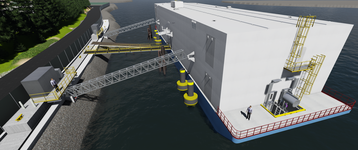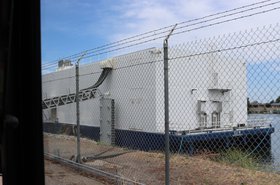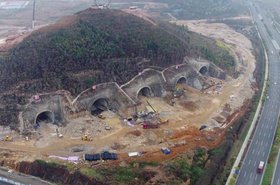Seals are hampering Nautilus’ plans to convert an old missile manufacturing building located on a decommissioned naval airbase into a data center.
Just a few dozen yards away from the Alameda Naval Air Station, California, is a group of harbor seals that have made their home on a dock.
If Nautilus’ conversion goes ahead, local objectors fear a pipe for circulating sea water used in cooling the proposed data centers servers back into the ocean could pass right underneath the seal’s dock.
Can Nautilus seal the deal?
One local councillor is worried that the water back pumped into the sea will be warmer than the ambient temperature of the ocean and could increase the probability of toxic algae accumulating where the used water enters the sea.
The councillor, Jim Oddie, is the only official on a board of four other councillors that has not approved the lease for Nautilus’ project. Oddie has said that the water used would be four degrees Fahrenheit warmer than the ambient sea water temperature. In fact, the 4 degree figure is a regulatory maximum, and Nautilus has promised a negligible temperature difference.
Nautilus contacted DCD to say that the piping route has not been decided, and that local marine biologist Jim Harvey has reviewed, and publicly supports them: "He is confident we will not affect the seals and he wrote a letter of support as well to the City of Alameda that is on file," said Nautilus.
State regulators have preliminarily approved Nautilus’ data center in Alameda, and have fully approved a similar facility in Stockton, California.
Speaking to ABC7 news, Jim Connaughton, CEO of Nautilus, said: 'When [used water] actually goes into the water, it will be less than a tenth of a degree Fahrenheit and when it blends with the bay it will be measurable." [sic - presumably "not measurable"].
Connaughton stressed that Nautilus’ cooling system has better environmental credentials than traditional models: "Today's data centers use air conditioning, which consumes massive amounts of energy, consumes massive amounts of public drinking water, generates wastewater and produces a whole lot of greenhouse gas chemicals.
"We take naturally cold water and we simply borrow it."
Back in 2017, Connaughton told DCD that the temperature change was “below the most stringent regulatory standards” in the US, promising a maximum temperature rise of 4°F (2°C). “So our discharge does not cross regulatory thresholds. We are a fraction of the discharge of power plants or large industrial process units. And we’re on par with the heat discharge of all the ships in the ports where many of our data centers will be located.”
Nautilus has also faced local opposition in Limerick, Ireland - but for a different reason. Limerick Port Users Group claim that the company's plans to build a barge in the port will take up too much space, leading to capacity constraints.
Military matters
The Alameda Naval Air Station was constructed in 1927 and was in frequent use as a homeport for aircraft carriers during the Cold War and Vietnam War. The base was decommissioned in 1997 and has since been used to house the USS Hornet museum ship and was used as a filming location for the television series MythBusters.
Converting decommissioned military facilities into data centers has proved a popular option for several operators.
In April of this year Swiss energy and infrastructure provider Energie Wasser Lucerne (EWL) began construction of a 4MW data center in an unused nuclear bunker in Lucerne, Switzerland, Verne Global use a converted NATO base in Iceland, Green Mountain's ex-NATO base is in Norway, and one company even plans to turn nuclear missile silos into data centers.




